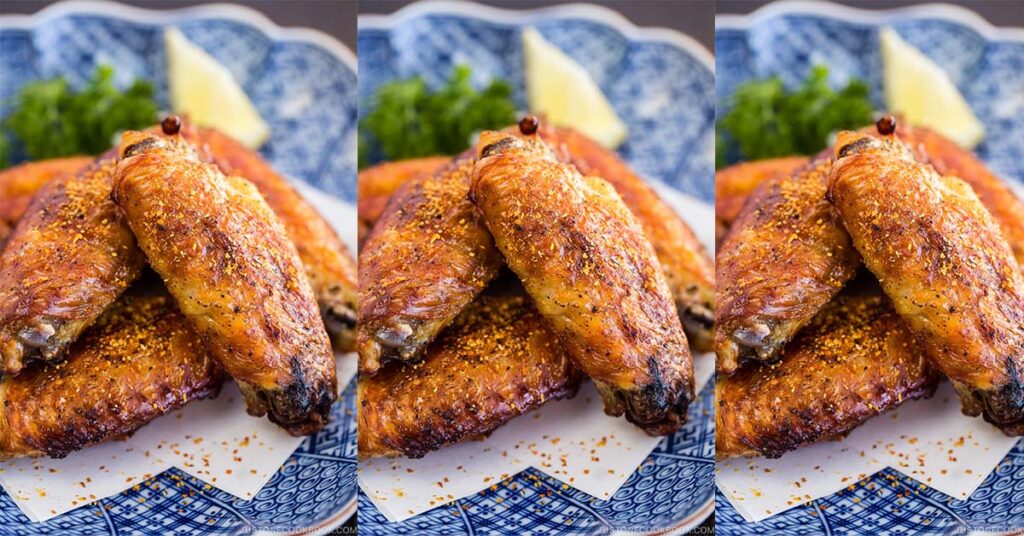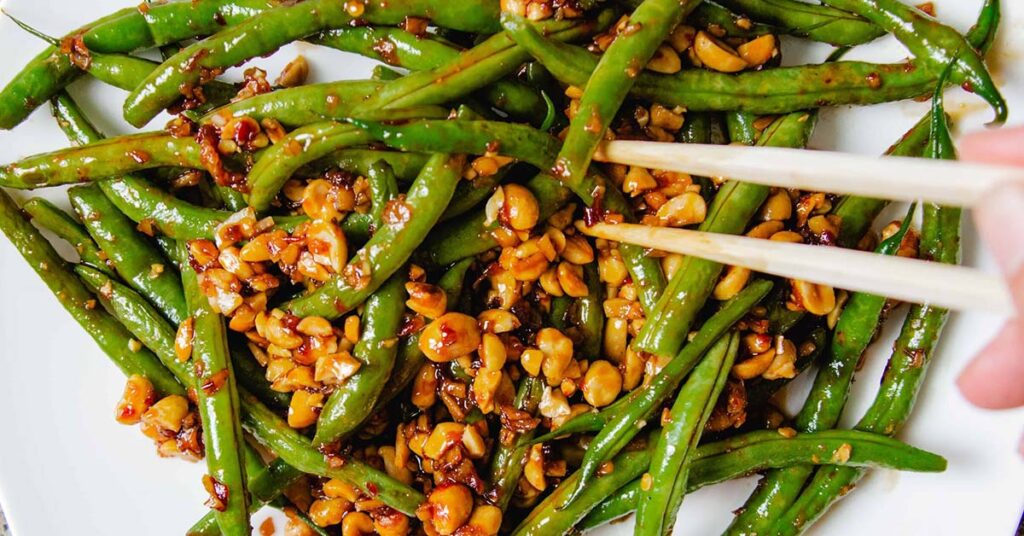Classic Japanese Side Dishes
Timeless Favorites: Classic Side Dishes
The heart of Japanese cuisine lies in its classic side dishes. These staples, known for their simplicity and depth of flavor, have been nourishing and delighting diners for generations. Let’s delve into some of these timeless favorites.
Spinach Ohitashi – A Nutrient-Rich Japanese Spinach Salad
Spinach Ohitashi is a testament to the Japanese art of simplicity. This dish involves blanching spinach and then soaking it in a savory broth. The result? A salad that’s both refreshing and rich in umami. It pairs wonderfully with virtually any meal, adding a burst of color and a wealth of nutrients. Moreover, it’s a versatile dish that you can easily adapt by topping with bonito flakes or sesame seeds for added texture and flavor.

Teriyaki Tofu – Crispy and Flavorful
Moving on, Teriyaki Tofu transforms the humble tofu into a crispy, flavorful delight. By pan-frying tofu and glazing it with teriyaki sauce, this dish offers a perfect balance of sweet and savory. It’s a hit even among those who are usually skeptical about tofu. Additionally, it’s a fantastic source of protein, making it a great option for vegetarians and meat-eaters alike.

Cucumber and Chicken Marinated in Chili Oil
Another classic dish is the Cucumber and Chicken Marinated in Chili Oil. This dish combines the coolness of cucumber with the tender texture of chicken, all brought together with a spicy chili oil dressing. It’s a perfect starter that awakens the palate, preparing you for the main course. Also, it’s incredibly easy to make, proving that simplicity often leads to the most memorable flavors.

Broccoli Blanched with Sesame Oil – A Versatile Vegetable Dish
Lastly, Broccoli Blanched with Sesame Oil stands out as a universally loved side dish. The key to its success lies in blanching the broccoli just right, preserving its vibrant color and crunch. A drizzle of sesame oil adds a nutty, aromatic finish that elevates the broccoli from a simple vegetable to a dish that’s both healthy and indulgent.
These classic Japanese side dishes embody the principles of harmony and balance. They bring together varied textures, flavors, and nutrients, creating a meal that’s not only delicious but also visually appealing. As we continue to explore more modern interpretations of Japanese side dishes, remember that these classics serve as the foundation, inspiring countless variations and innovations in Japanese cooking.

Unique and Modern Takes
Modern Twists on Traditional Japanese Sides
As much as we cherish the classics, the evolution of Japanese side dishes has introduced some unique and modern takes that have quickly become favorites. These dishes blend traditional techniques with contemporary flavors, showcasing the versatility of Japanese cuisine.
Japanese Chilled Tofu (Hiyayakko) – A Refreshing Treat
Hiyayakko, Japanese chilled tofu, is a simple yet profoundly satisfying dish, especially during the warmer months. Topped with katsuobushi (bonito flakes), green onions, grated ginger, and a dash of soy sauce, it’s a symphony of flavors. For a modern twist, experiment with unconventional toppings like sweet corn, cherry tomatoes, or avocado slices. This dish is not only refreshing but also offers a canvas for creativity, allowing you to tailor it to your taste preferences.

Japanese Salted Chicken Wings (Teba Shio) – A Simple Delicacy
Japanese Salted Chicken Wings, or Teba Shio, are a minimalist’s dream. With just three ingredients—chicken wings, salt, and sake—this dish emphasizes the natural flavors of the chicken, enhanced by a hint of sake. For those who enjoy a bit of heat, a sprinkle of Shichimi Togarashi adds a delightful spice. The wings, broiled to perfection, achieve a crispy skin that’s hard to resist. This dish proves that sometimes, less is indeed more.

Japanese Potato Salad – Creamy and Crunchy
The Japanese Potato Salad is a creamy, comforting side that incorporates colorful vegetables and a tangy mayonnaise dressing. Unlike its Western counterpart, this salad is slightly mashed, creating a unique texture that’s both creamy and crunchy. Adding cucumbers, carrots, and ham turns it into a colorful medley of flavors. It’s a versatile dish that pairs well with any meal, proving that modern twists can refresh traditional recipes.

Tamagoyaki (Japanese Rolled Omelette) – Sweet and Savory
Lastly, Tamagoyaki, the Japanese rolled omelette, is a beloved dish that’s as much a treat for the eyes as it is for the palate. By layering thin sheets of egg, seasoned with a touch of soy sauce and sugar, it achieves a balance of sweet and savory. This dish requires a bit of skill to master, but the result is a fluffy, layered omelette that’s perfect for breakfast or as a side. Modern variations include filling the omelette with cheese, spinach, or even smoked salmon, offering a new twist on a classic recipe.
These modern interpretations of Japanese side dishes demonstrate the cuisine’s adaptability and innovation. By embracing new ingredients and techniques, these dishes offer a fresh perspective on traditional flavors, enriching the culinary landscape of Japanese cuisine. As we continue to explore, remember that the essence of Japanese cooking—balance, harmony, and simplicity—remains at the heart of these modern creations.

Vegetarian and Vegan Options
Plant-Based Japanese Side Dishes
The versatility of Japanese cuisine shines through its array of vegetarian and vegan options. These dishes not only adhere to plant-based diets but also offer a burst of flavors that can impress any palate. Let’s explore some delightful vegetarian and vegan Japanese side dishes that bring health and taste to the forefront.
Green Bean Shiraae – Mixed with Tofu and Sesame
Green Bean Shiraae is a nourishing blend of lightly cooked vegetables, crumbled tofu, miso, and sesame seeds. This dish is a powerhouse of nutrients, offering a creamy texture and a subtle sweetness from the miso. It’s incredibly versatile; besides green beans, you can use spinach or asparagus. The tofu adds a protein boost, making it a satisfying side dish that complements any meal. It’s a perfect example of how traditional Japanese flavors can be adapted to suit vegetarian and vegan diets.

Eggplant Dengaku – Glazed with Sweet Miso
Eggplant Dengaku, tender eggplant glazed with a sweet miso sauce, is a classic dish that’s both vegan-friendly and full of flavor. The miso glaze caramelizes under the broiler, giving the eggplant a deliciously sweet and savory topping. This dish is not only easy to prepare but also a great way to enjoy the rich, umami flavors of miso. It’s a testament to the fact that simple ingredients can create deeply satisfying dishes.

Spicy Bean Sprout Salad – A Spicy Kick
For those who enjoy a bit of spice, the Spicy Bean Sprout Salad is a must-try. Dressed in a spicy sesame oil-based sauce, this salad offers a crunchy texture and a kick of heat that can liven up any meal. It’s a fantastic accompaniment to rice bowls or noodles, providing a refreshing contrast to heavier dishes. Plus, it’s packed with vitamins and minerals, making it a healthy addition to your meal.

These vegetarian and vegan Japanese side dishes showcase the cuisine’s ability to cater to diverse dietary preferences without compromising on taste or nutrition. By incorporating a variety of vegetables, tofu, and flavorful sauces, these dishes offer a delightful experience that’s both wholesome and satisfying. As we continue to explore the rich tapestry of Japanese cuisine, it’s clear that its plant-based offerings are as integral and celebrated as its seafood and meat dishes.
FAQs
Frequently Asked Questions About Japanese Side Dishes
As we delve into the world of Japanese side dishes, several questions often arise, highlighting the curiosity and eagerness to learn more about this fascinating aspect of Japanese cuisine. Let’s address some of the most common inquiries.
What Makes a Side Dish Authentically Japanese?
Authenticity in Japanese side dishes comes from the use of traditional ingredients, preparation methods, and the balance of flavors. Ingredients like soy sauce, miso, seaweed, and dashi broth are staples. Techniques such as ohitashi (blanching and marinating in soy-based sauce) and dengaku (glazing with miso) are quintessential. An authentic Japanese side dish often aims to achieve a harmonious balance of umami, sweetness, acidity, and saltiness, reflecting the depth and complexity of Japanese culinary philosophy.
Can These Dishes Be Made Vegan or Gluten-Free?
Absolutely! Many Japanese side dishes are naturally vegan or can be easily adapted. For example, hiyayakko (chilled tofu) can be topped with vegan-friendly garnishes. Similarly, gluten-free adaptations are possible by using tamari or gluten-free soy sauce in place of regular soy sauce. The versatility of Japanese cuisine allows for various dietary preferences, ensuring everyone can enjoy these delicious dishes.
Tips for Preparing Side Dishes in Advance
Japanese side dishes often lend themselves well to advance preparation, making meal planning easier. Dishes like tamagoyaki (rolled omelette) and potato salad can be made ahead and stored in the refrigerator. For dishes like spinach ohitashi, blanching and marinating the spinach beforehand allows the flavors to deepen. However, it’s best to add any fresh toppings or dressings right before serving to maintain texture and freshness. Planning and a bit of creativity can make these side dishes convenient additions to any meal.
These FAQs shed light on the adaptability, healthfulness, and convenience of Japanese side dishes, making them an appealing option for a wide range of diets and lifestyles. As we continue to explore and experiment with these dishes, we not only broaden our culinary horizons but also gain a deeper appreciation for the art of Japanese cooking. Whether you’re a novice cook or a seasoned chef, the world of Japanese side dishes offers endless possibilities for exploration and enjoyment.














1 thought on “Japanese Side Dishes: Classic to Modern Vegetarian Options”